I hope you're all doing well and feeling great! Damn, is that too cheery?
Currently I am feeling a burning in my left nostril. It is the after affect of making my inaugural vinagre, which is a Puerto Rican homemade hot sauce (I think) or flavoring. I found the recipe at the blog of Daisy Martinez, here. Even though I used gloves to handle the chilis, somehow my nostril must have been contaminated. We'll see if I can utilize this condiment; my version made a lot more than the quart indicated in the recipe.
The last few days have been interesting as I have been HOME ALONE! R traveled to Palm Springs, California for work on Thursday, and returns tonight. I was very mad that he got to go to Cali, especially while I'm otherwise free. But the plane ticket for me to join him was $1,000 or something stupid.
In my research of Palm Springs, I discovered that the state bird of California is the California quail. This tied in nicely with the pheasants we saw over Christmas in Wisconsin. We were on our way to A and T-Dogg's house when I took a wrong turn on a country road. Thankfully it was a beautiful sunny day, and we spotted a group of pheasants spanning a farm side road. One of the pheasants had lost a race with another car, however! But the rest moved out of the way as we turned around and went in the right direction.
So, today we will learn about pheasants and quail!
The California quail, Callipepla california:
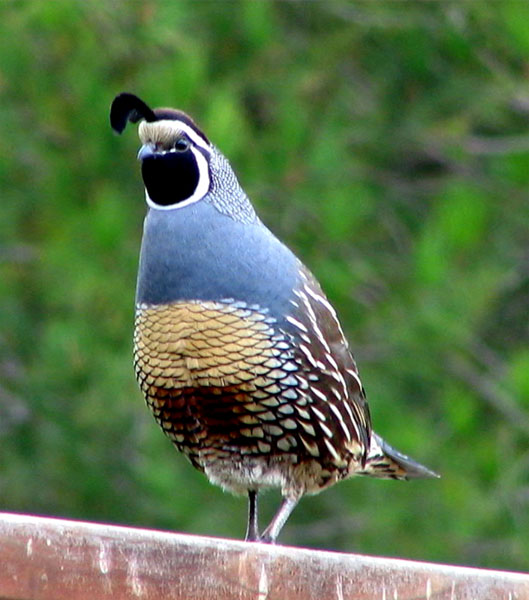
Isn't he cute?!
More familiar to you may be this species; the bobwhite quail native to the Upper Midwest, Colinus virginianus:
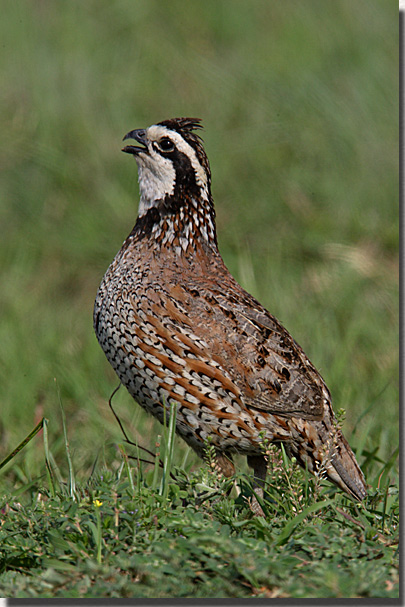
(Obviously appearance in California is more important than in the Midwest!)
Bobwhites, as bobwhite quail are otherwise known, are given that name because of their distinctive call. These birds range from Ontario to Central America. They are about six to seven inches tall and weigh around six ounces. Males are larger and more distinctively marked with black and white, like the photo above, while females are more drab in color.
Quail especially like areas that are freshly burned for foraging. They need some type of brushy or forest cover. Along with seeds, nuts, fruits and plants, bobwhites eat a lot of insects.
Quail usually travel in a covey of five to 30 birds, which disperse into pairs during the mating season in April. The quail pair off into a territory of their own and build a nest within dry plant matter, where 12 to 14 white eggs are laid. It seems more than one female may lay eggs in any particular nest. Males assist with the incubation, and the chicks leave the nest 24 hours after they are hatched. In fact, chicks are independent after two weeks. About half of quail chicks survive their first year.
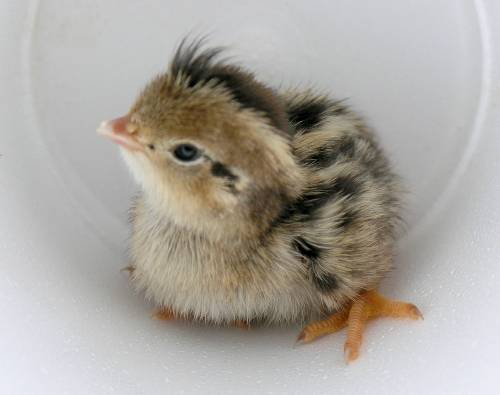
Maybe R and I should raise baby quail chicks in our apartment this spring?
Unlike quail, which have New World (the two species above) and Old World species, pheasants are natives of Asia! Because they're adaptable and fun to hunt, pheasants were introduced all over the world, first reaching the United Kingdom in the 10th century. They died out there eventually but were reintroduced for hunting. The first pheasants arrived in the United States in 1857. They've also been carried to New Zealand, Hawaii and Chile, among other places.
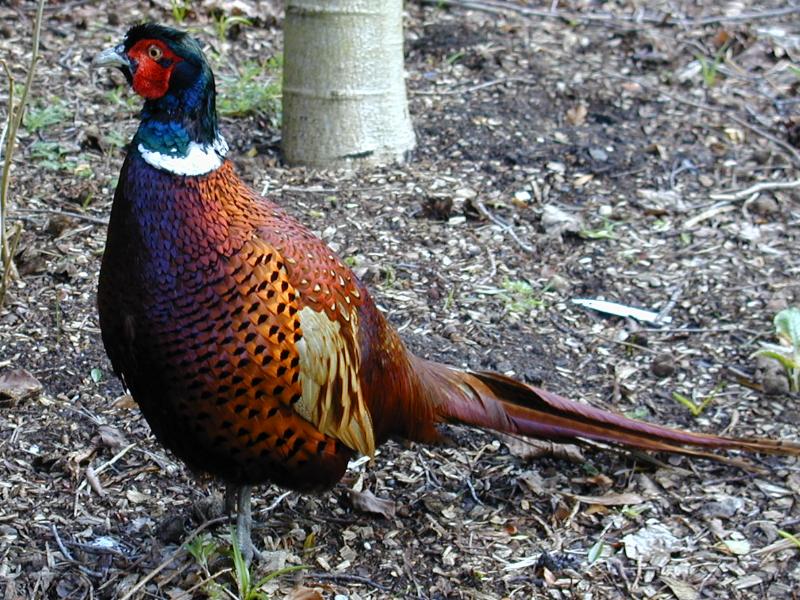
Bigger than quail, pheasants are around 20 to 30 inches long, with a tail measuring 12 inches or more. They weigh between one and six pounds. Along with plant matter, pheasants eat a lot of snakes, lizards, insects and small mammals. Pheasants live in loose groups and nest in a similar way to quail, although with pheasants there is more of a harem system with one rooster and several hens.

A pheasant nest.
It seems like pheasant chicks stay in a family group until they're about full grown at five weeks.
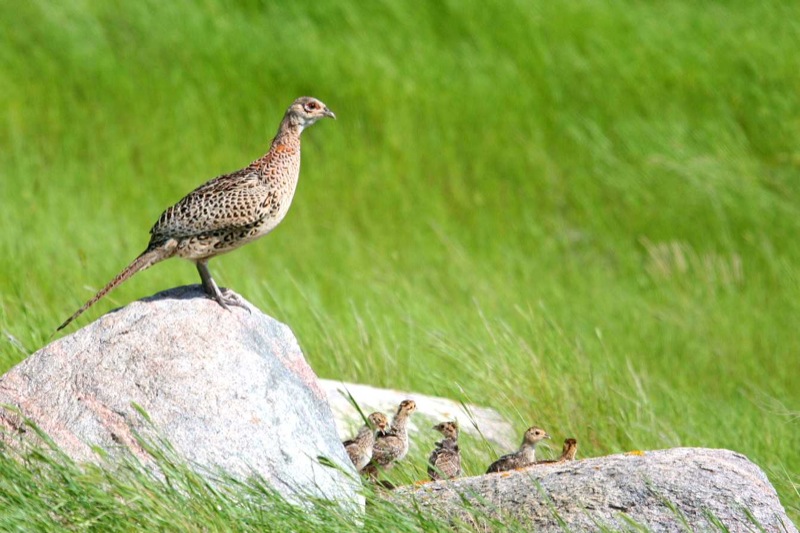
Mama and babykins.
At night or in inclement weather, pheasants roost in trees. They're short distance fliers, usually attaining an airspeed of 27 to 38 miles per hour. But as hunters know, a fleeing pheasant can fly up to 60 mph. Often dogs are trained to flush out the birds, which make a distinctive whirring sound as they fly up out of cover.
This male pheasant looks ticked off!
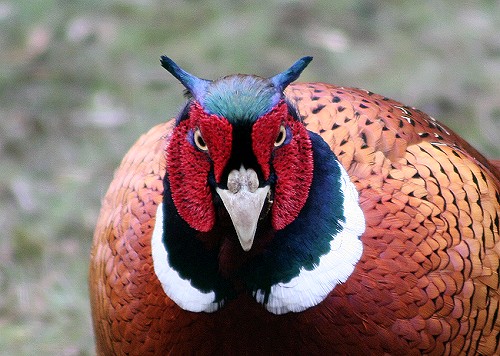
This pheasant chick looks adorable!
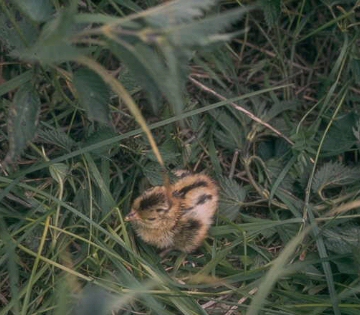
Because of their status as game birds, both pheasants and quail are raised in farms. It seems most pheasants in England are propagated in captivity, and usually don't survive more than a year in the wild. Most pheasants in the U.S., however, are feral birds. With the decline of farmland, pheasants are becoming threatened in some areas. Most states only allow roosters to be shot. (Any hunters want to confirm this?)
Natural enemies of pheasants and quail include hawks, owls, foxes, skunks, raccoons, snakes and opossum. Eggs and chicks are especially vulnerable to attack.
I'm just picturing the covey of quail that we really should get this spring. They can roost in a basket hung on R's clothes rack, we can feed them toast crumbs and they can peck our floors clean, and then the chicks will follow us as we walk around the block!
Do you have any quail or pheasant stories?
Guard your nostrils from the chili peppers,
Wendell!

7 comments:
Once when I was driving to school in the Wilderness, a pheasant flew out in front of me and smashed hard into my windshield. It was very scary. I think the pheasant perished.
Do you think I could take that little quail chick to bed with me...looks so fuzzy and snuggly. He might peck at my eyeballs while I'm sleeping though. Pass.
When I was little, I adopted some baby chicks and took them to bed with me. They slept under my hair and I got lice.
Eww
Katie, I'm jealous of your baby chicks!
Once I dated a Wilderness guy whose parents had a farm, and I spent a half an hour trying to capture duck and chicken chicks. I was 22!
I have some pheasant roosters that appear regularly near an orchard on my way to work. I've seen them more during the winters than summers, but I haven't seen them lately because it's still pretty dark when I go past. When I do see them I like to pull over, roll down the window, and discuss roadside safety. They really do need to be more careful.
Pheasant birds is wonderful!
thomasbirds.blogspot.com
Post a Comment